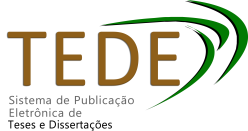| ???jsp.display-item.social.title??? |


|
Please use this identifier to cite or link to this item:
http://localhost:8080/tede/handle/tede/191| ???metadata.dc.type???: | Tese |
| Title: | RINGS DIVERSITY AROUND SMALL SOLAR SYSTEM BODIES: DISCOVERIES AND DETECTION LIMITS |
| ???metadata.dc.creator???: | PEREIRA, CHRYSTIAN LUCIANO |
| ???metadata.dc.contributor.advisor1???: | BRAGA RIBAS, FELIPE |
| ???metadata.dc.description.resumo???: | A primeira detecção de um sistema de anéis por meio de ocultação estelar, um marco significa tivo na história da ciência planetária, ocorreu em 1977. Naquela ocasião, astrônomos descobriram inesperadamente os anéis de Urano enquanto estudavam a atmosfera do planeta. Esta descoberta foi seguida por uma similar em 1984, quando os anéis de Netuno foram detectados como arcos usando o mesmo método. Há uma década, um sistema de anéis foi identificado ao redor do objeto Centauro (10199) Chariklo, marcando a primeira ocorrência de tal caracterı́stica em um pequeno corpo além dos planetas gigantes. Essa descoberta sugeriu que sistemas de anéis poderiam ser mais comuns entre pequenos corpos do Sistema Solar do que se acreditava anteriormente, como evidenciado por descobertas subsequentes ao redor do planeta anão Haumea e indicações de anéis ou material cometário ao redor do Centauro (2060) Chiron. Considerando que alguns autores sugerem que a atividade cometária pode estar relacionada à presença de anéis, investigamos a proximidade de pequenos corpos no sistema solar externo, usando a técnica de ocultação estelar para procurar sinais de material confinado. Uma ocultação estelar ocorre quando um objeto é observado bloqueando a luz de uma estrela distante durante um certo intervalo de tempo. Observar a luz da estrela antes, durante e após a ocultação nos permite coletar informações detalhadas sobre a posição astrométrica, tamanho, forma, atmosfera e sistemas de anéis do objeto. Em termos de resolução espacial, este método altamente preciso pode revelar detalhes finos que são difı́ceis de detectar em observações baseadas em solo, tornando-se inestimável para estudar Objetos Pequenos do Sistema Solar distantes e fracos. Os objetos Centauros (60558) 174P/Echeclus, 29P/Schwassmann-Wachmann 1 e (2060) Chiron exibiram erupções regulares, tornando-os alvos ideais para a busca de material confinado. Primeiramente, examinamos curvas de luz de ocultações estelares do Centauro ativo Echeclus observadas entre 2019 e 2021. Embora nenhuma caracterı́stica indicativa de material circundante tenha sido detectada, limites de detecção foram estabelecidos e as propriedades fı́sicas de Echeclus foram derivadas. Observamos a primeira ocultação estelar por 29P em dezembro de 2022 e conseguimos encontrar indicações de material confinado simetricamente distribuı́do ao redor do objeto. Observações de ocultação de Chiron foram conduzidas em 2018, 2019 e 2022 para caracterizar suas estruturas ao longo do tempo. O evento de 2019, sendo a primeira observação multi-cordas deste Centauro, permitiu-nos restringir suas dimensões tri-axiais. As observações de 2022 confirmaram estruturas previamente propostas e revelaram variações significativas de propriedades, como largura e profundidade óptica. Uma ocultação estelar recente de Chiron em 2023 ainda está em análise, mas os dados de alta resolução obtidos no Observatório do Pico dos Dias podem resolver questões pendentes sobre o ambiente de Chiron. A maior descoberta veio após a detecção de um anel além do limite de Roche ao redor do Objeto Transnetuniano (50000) Quaoar. Realizamos uma campanha de observação para caracterizar melhor esse anel em 2022. Nossa análise revelou a presença de um segundo anel ao redor de Quaoar, muito mais próximo ao corpo principal, mas também localizado além do limite de Roche. Esta tese apresenta os métodos desenvolvidos para buscar, caracterizar e estabelecer limites superiores na detecção de material confinado ao redor de pequenos corpos do Sistema Solar. Apresentamos evidências observacionais de que apenas as ejeções de material não são capazes de formar anéis. Devido à diversidade da localização das estruturas confinadas no Sistema Solar e suas propriedades apresentadas aqui, fica mais claro que a formação de anéis ao redor de pequenos corpos só pode resultar de uma combinação de fatores, como colisões (primordiais) ou processos de ejeção, aliados a um ambiente dinâmico favorável ao redor do corpo principal. Nossos achados e propriedades fı́sicas dos objetos estudados são apresentados em associação com os respectivos artigos de pesquisa. |
| Abstract: | The first detection of a ring system through stellar occultation, a significant milestone in the history of planetary science, occurred in 1977. Then, astronomers unexpectedly discovered Uranus’s rings while studying the planet’s atmosphere. This discovery was followed by a similar one in 1984 when Neptune’s rings were detected as arcs using the same method. A decade ago, a ring system was identified around the Centaur object (10199) Chariklo, marking the first instance of such a feature in a small body beyond the giant planets. This discovery suggested that ring systems might be more common among small Solar System bodies than previously believed, as evidenced by subsequent findings around the dwarf planet Haumea and the indications of rings or cometary material around the Centaur (2060) Chiron. Considering that some authors suggest cometary activity might be related to the presence of rings, we sounded the vicinity of small bodies in the outer solar system, using the stellar occultation technique to search for signs of confined material. A stellar occultation happens when an object is observed blocking a distant star’s light during a certain time interval. Observing the star’s light before, during, and after the occultation lets us gather detailed information about the object’s astrometric position, size, shape, atmosphere, and ring systems. In terms of spatial resolution, this highly precise method can reveal fine details that are otherwise difficult to detect from ground-based observations, making it invaluable for studying distant and faint Small Solar System Objects. The Centaurs Objects (60558) 174P/Echeclus, 29P/Schwassman-Wachamnn 1 (29P), and (2060) Chiron exhibited regular outbursts, making them ideal targets for the search for confined material. We first examined light curves from stellar occultations of the active Centaur Echeclus observed between 2019 and 2021. While no features indicative of surrounding material were detected, strong detection limits were established, and the physical properties of Echeclus were derived. We observed the first stellar occultation by 29P in December 2022 and were able to find indications of confined material symmetrically distributed around the object. Occultation observations of Chiron were conducted in 2018, 2019, and 2022 to characterize its structures over time. The 2019 event, being the first multi-chord observation of this Centaur, allowed us to constrain its tri-axial dimensions. The 2022 observations confirmed previously proposed structures and revealed significant property variations, such as width and optical depth. A recent stellar occultation of Chiron in 2023 is still under analysis, but the high-resolution data obtained at Observatório do Pico dos Dias may solve ongoing questions about Chiron’s environment. The greatest finding came after discovering a ring beyond the Roche limit around the Trans- Neptunian Object (50000) Quaoar. We conducted an observation campaign to further characterize this ring in 2022. Our analysis revealed the presence of a second ring around Quaoar, much closer to the main body but also located beyond the Roche limit. This thesis presents the methods developed to search for, characterize, and place upper limits on detecting confined material around SSSO. We present observational evidence that material ejections alone are not capable of forming rings. Due to the diversity of the confined structures’ location in the Solar System and their properties presented here, it is clearer that the formation of rings around small bodies can only result from a combination of factors, such as (primordial) collisions or ejection processes, allied with a favorable dynamical environment around the main body. Our findings and physical properties of the studied objects are presented in association with the respective research papers. |
| Keywords: | Ocultações estelares;2. Objetos Trans-Netunianos;3. Centauros;4. Anéis. |
| ???metadata.dc.subject.cnpq???: | ASTRONOMIA::ASTROFISICA ESTELAR |
| Language: | por |
| ???metadata.dc.publisher.country???: | Brasil |
| Publisher: | Observatorio Nacional |
| ???metadata.dc.publisher.initials???: | ON |
| ???metadata.dc.publisher.department???: | Divisão de Programas de Pós-Graduação - DIPPG |
| ???metadata.dc.publisher.program???: | Programa de Pós-Graduação em Astronomia |
| Citation: | PEREIRA, CHRYSTIAN LUCIANO. RINGS DIVERSITY AROUND SMALL SOLAR SYSTEM BODIES: DISCOVERIES AND DETECTION LIMITS. 2024, 159 páginas da Tese do Programa de Pós-Graduação em Astronomia) - ON, Rio de janeiro. |
| ???metadata.dc.rights???: | Acesso Aberto |
| URI: | http://localhost:8080/tede/handle/tede/191 |
| Issue Date: | 27-Aug-2024 |
| Appears in Collections: | Teses de Doutorado PPGA |
Files in This Item:
| File | Description | Size | Format | |
|---|---|---|---|---|
| Chrystian Luciano Pereira.pdf | 31.86 MB | Adobe PDF | Download/Open Preview |
Items in DSpace are protected by copyright, with all rights reserved, unless otherwise indicated.




